If you've ever noticed an odd noise or difficulty when steering your vehicle, you may be experiencing a lack of power steering or a leak.
If you can't get to an auto body shop immediately, you might be left wondering, can you drive a car without power steering?
While it's technically possible to drive your car without power steering, it's potentially dangerous, makes it more difficult to steer, and can cause damage to your vehicle. It's also illegal in some places, making it far from recommended.
Please keep reading to learn about what happens in the absence of power steering, how long you can go on like this, and how much it costs to fix it.
We'll also discuss ways to recognize your power steering is faulty, DIY power steering replacement, and the differences in how types of power steering work.
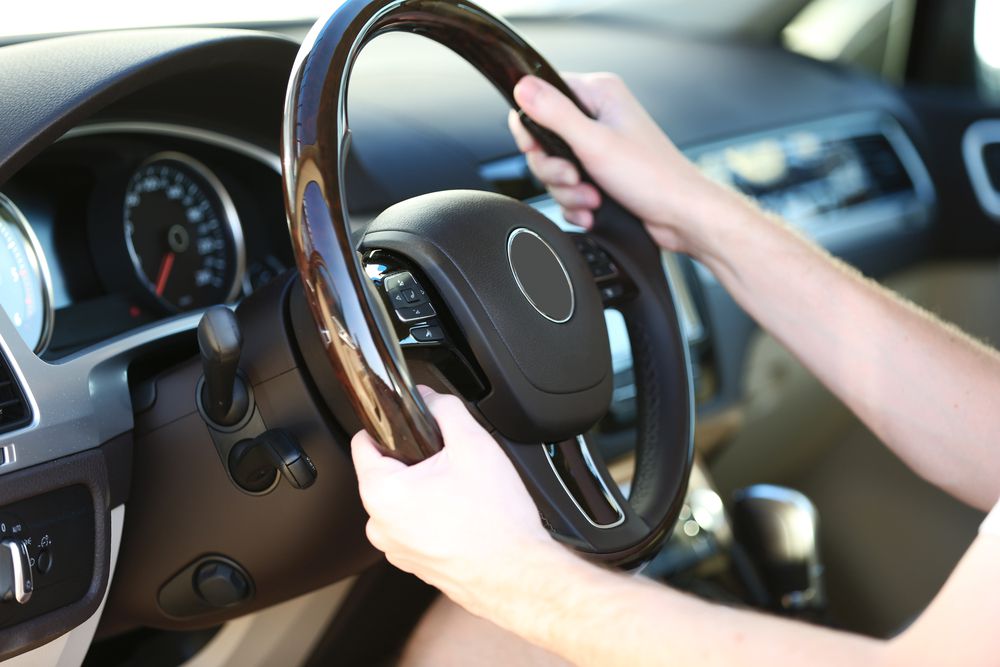 Turning a steering wheel
Turning a steering wheel
Is Power Steering Necessary?
These days, most vehicles are manufactured with power steering, which makes it possible to steer the car with minimal effort (even at low speeds).
While it isn't technically necessary, it's crucial when it comes to safely navigating with your car.
If you have a car equipped with power steering, you don't want to neglect maintenance when it's faulty. This could lead to car damage and difficulties while on the road.
How Does Power Steering Work?
There are a couple of kinds of power steering - hydraulic and electric. It works by mechanically reducing the effort needed to turn the steering wheel.
The main differences between the two types of power steering are their weight in your vehicle and their fuel efficiencies.
Hydraulic Power Steering
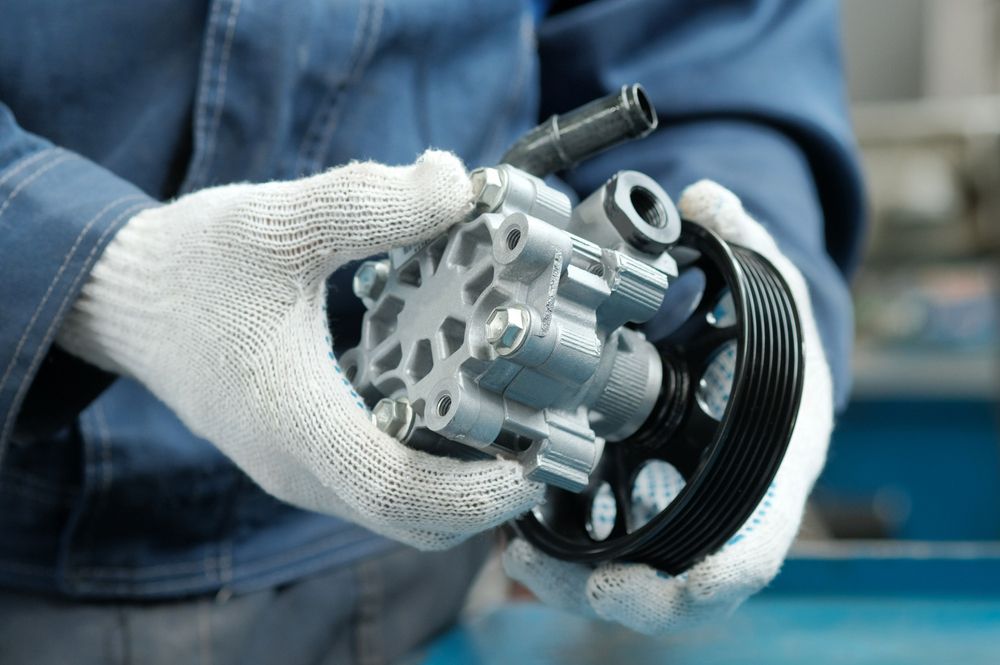 Hydraulic power steering pump
Hydraulic power steering pump
Hydraulic power steering (the heavier system) utilizes energy from the vehicle's engine to work. There is a hydraulic pump or piston, and hydraulic power steering uses multiple forms of fluid. This is why hydraulic power steering is often subject to leaks.
The hydraulic pump pressurizes the fluid to apply pressure onto the steering system. That is how it moves the wheels with minimal effort on your part.
The flow of fluid and pressure applied is proportionate to how much you turn the steering wheel in this power steering method.
Electric Power Steering
On the other hand, electric power steering doesn't involve pumps. Instead, as the name suggests, cars with electric power steering use electric motors.
They're more lightweight than hydraulic systems are, and they're less prone to fluid leaks.
Instead of drawing energy from the engine, electric power steering draws energy from the car's electrical system.
Based on how much effort you apply to the steering wheel, the vehicle's electrical system decides how much force to apply to the wheels to assist the driver.
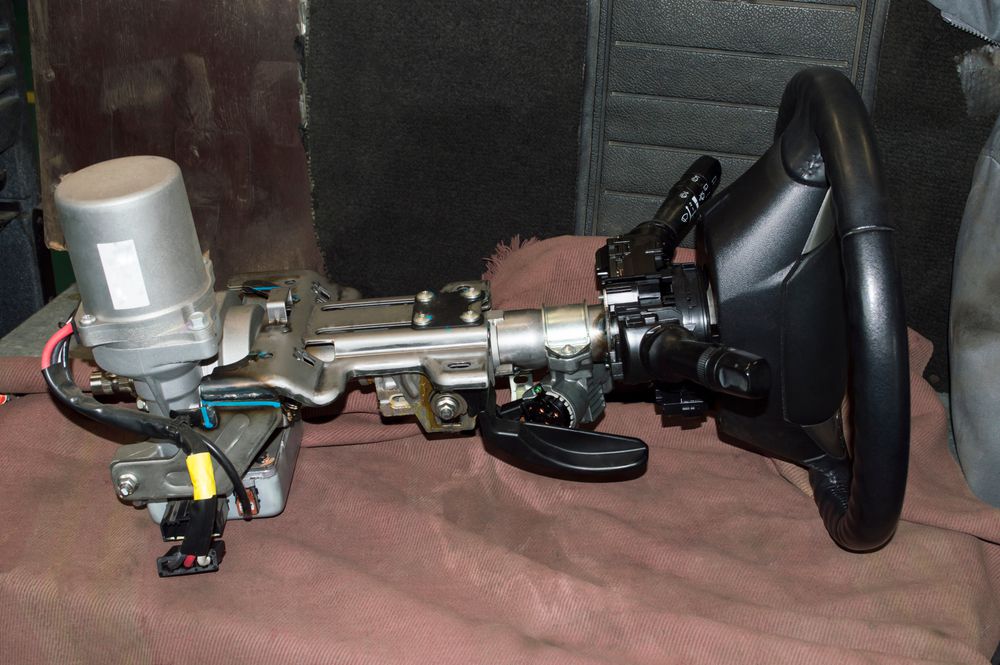 Electric power steering column
Electric power steering column
How Do You Know If The Power Steering Is Broken?
There are a few signs that your vehicle's power steering might be broken.
Whining Noise Or Groaning Noise
A tell-tale sign of a faulty power steering is an odd noise when trying to steer. Whining and groaning noises should not occur when you turn your vehicle's steering wheel.
Hard Steering
Another more obvious sign of poor or broken power steering is when you face difficulty steering.
Because the job of the power steering is to make it easier to steer, hard steering is a sign that it isn't working as it should.
If you notice that it takes much more effort to turn the steering wheel - especially when you're moving at slow speeds - your power steering may be broken.
Low Fluid Level
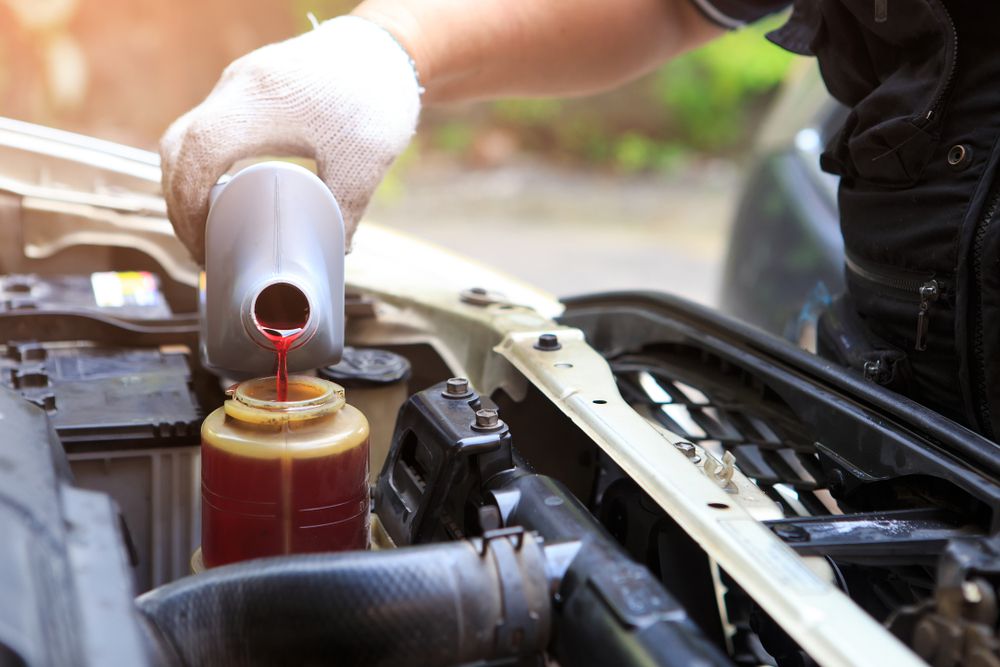 Filling power steering reservoir
Filling power steering reservoir
Low power steering fluid levels in cars with hydraulic power steering systems lead to malfunctioning.
This may be due to a leak, or it might be happening because of a completely broken system that needs to be replaced.
You can confirm the power steering fluid levels by popping your vehicle's hood and looking in the power steering reservoir.
Fluid Color
If you suspect that your power steering is broken, you can also get a better idea by popping the hood and inspecting the fluid color in the reservoir.
Power steering fluid that is still usable should be red. Some manufacturers also use clear or dyed green fluid for power steering.
When the fluid is no longer good, it will appear dirty, foamy, brown, or changed from its starting color.
The general guideline is that power steering fluid should be changed every five years or 80,000 miles; however, you should confirm with your owner's manual or mechanic for your specific make and model.
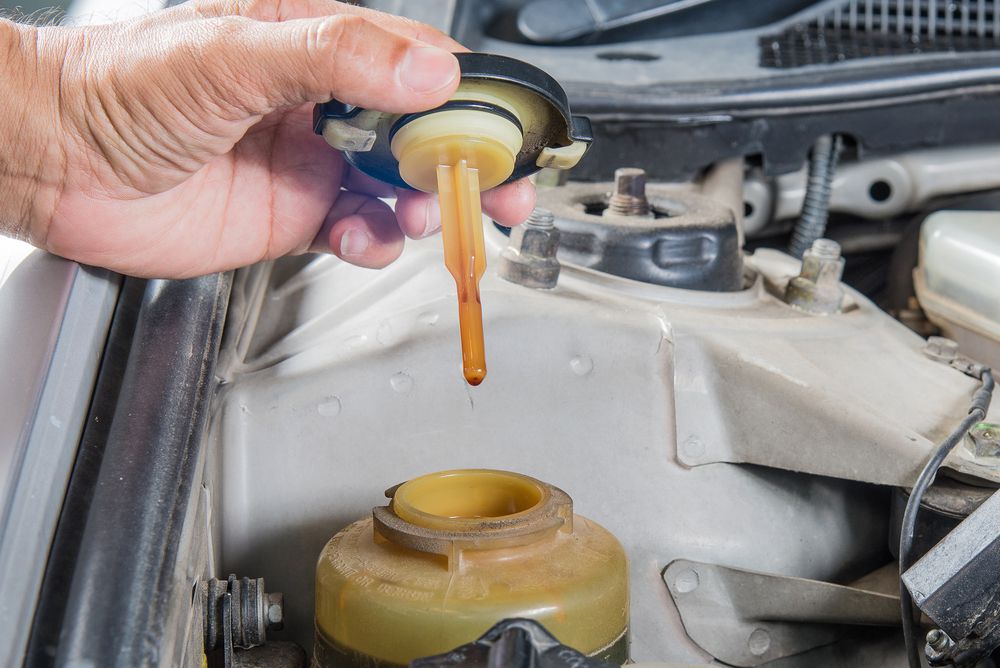 Inspecting power steering fluid color
Inspecting power steering fluid color
Small Leaks Eventually Escalate To Bigger Leaks
Another sign that your power steering is broken is that the fluid leaks keep getting bigger.
While a small leak isn't the end of the world, continuous leaking can quickly become a problem.
Usually, this starts to occur with old age and the deterioration of O-rings and seals in the power steering system.
Power Steering Leak Affects Drivability?
Aside from noticing that it's harder to steer your vehicle, a broken power steering system may make your car less drivable.
If you turn your wheel while slowly rounding a corner, the wheel might stiffen up or become slow to respond.
This is not good, and it can cause your car to move where you might not want it to go unintentionally.
Driving Long Hours Without Power Steering Fluid Can Damage The Pump?
It's important to note that if you prolong the use of a vehicle lacking in power steering fluid, you'll damage its pump.
This can lead to costly damages and repairs down the line, which you want to avoid if possible.
So, if you've been driving like this for a while, it may be a sign that you'll have to replace a power steering part completely.
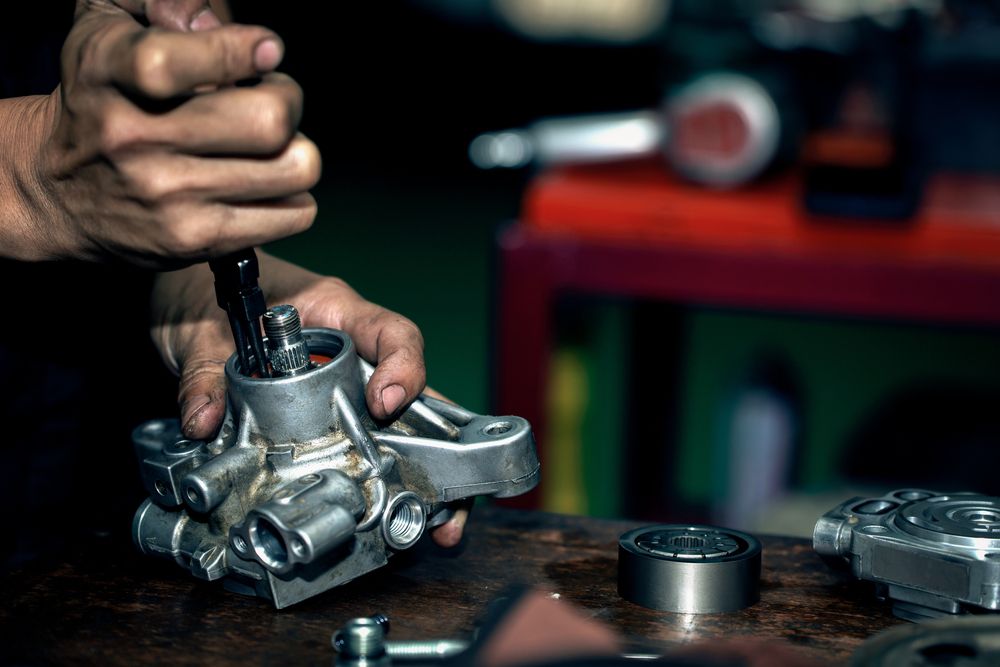 Repairing broken power steering pump
Repairing broken power steering pump
Squealing Noise When Starting The Car?
You might also hear noises when turning the key in your car's ignition.
If you hear a squealing noise as the engine turns over, it may signify that the pump in your power steering system (hydraulic) is faulty or broken.
What Happens If There Is No Power Steering?
Without a power steering system, a car becomes much less manageable to drive, turn, and navigate the roads with.
Particularly when you are driving at low speeds, the wheel will be stiff and require a lot of effort to turn.
Or, you might notice a significant delay between when you turn the steering wheel and when the vehicle wheels turn themselves.
Furthermore, if your car is equipped with power steering but doesn't have it, it can lead to pump damage and leaks.
 The steering is hard without power steering
The steering is hard without power steering
Is It Illegal To Drive Without Power Steering?
Depending on your state, it may or may not be legal to drive without power steering.
Older car models might not even be fitted with power steering and instead have manual steering, but they are still fit for the roads.
In many cases, you can get away with driving a car without power steering, but it will make it a lot harder for you to turn, park, and do other low-speed maneuvers.
How Much Does It Cost To Fix Power Steering?
It can be expensive to replace power steering.
Power steering replacements aren't the most expensive compared to other automobile maintenance jobs.
However, they also aren't exactly cheap.
Depending on the replacement job, you'll likely end up spending a few hundred dollars, even if you DIY replace a part.
The fact of the matter is that the parts aren't cheap for this essential system in your car.
Most repair jobs related to power steering lie in the price range of $500-$700.
The average power steering pump replacement job costs just below $600 (about $425 for the pump and $175 for labor).
However, these costs vary based on location.
Look at the following estimates for replacing power steering pumps in a sedan in different locations across the United States (based on RepairPal figures):
Cost of replacing a power steering pump in a 2008 Toyota Corolla
| City |
Cost (Parts + Labor) |
| Columbus, OH |
$540 |
| Los Angeles, CA |
$590 |
| Dallas, TX |
$585 |
| Burlington, VT |
$485 |
| Madison, WI |
$540 |
However, if you're only getting a power steering hose replaced/fixed, you'll likely only pay $100-$200.
How Long Does It Take To Fix Power Steering?
The upside of power steering repairs is that they don't take long to fix.
The job can be finished in an auto body shop in a day - even as quickly as 2-3 hours with an efficient mechanic.
However, fixing the system yourself may take more time, especially if you aren't a professional mechanic.
Can You Drive A Car With A Broken Power Steering Pump?
You technically can drive a car with a broken power steering pump, but you shouldn't for any other purpose than taking it to the auto body shop to get it fixed.
Because this part is so essential in the car's steering process, driving without it will make navigating the roads nearly impossible.
This is especially true with newer car models.
Further, if your pump isn't completely broken, you might damage it to the point of needing replacement by driving.
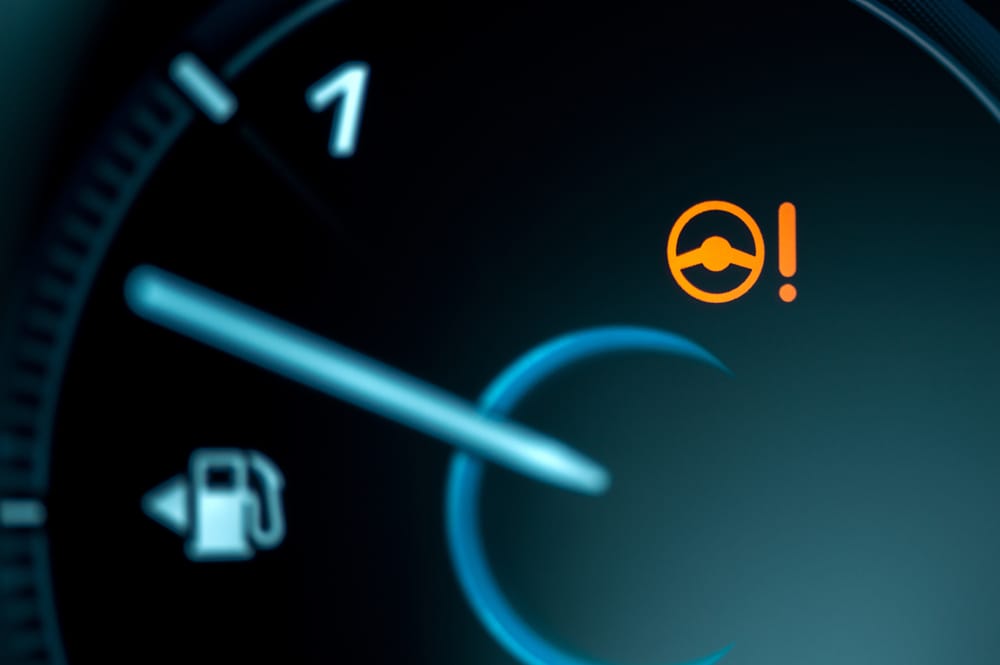 Power steering warning light
Power steering warning light
How Long Can You Drive Without Power Steering?
You should minimize the amount of time that you drive your vehicle without adequately functioning power steering.
It's not recommended to drive a car without power steering for more than a few miles or however long it takes to get it to a mechanic.
If it's the power steering fluid that you're lacking, then you shouldn't drive it at all until you refill that fluid.
Can I Replace A Power Steering Pump Myself?
Yes, like many auto repairs, you can DIY replace a power steering pump at home. Of course, it helps if you're a mechanic yourself, but you don't have to be.
To be safe, you need to first shut off your vehicle's engine and wait until it cools completely.
Then, you should:
- Remove the belt from the power steering pump
- Disconnect the feed and return lines to drain the power steering fluid into a pan
- Remove the power steering pump
- Install the new pump
- Reconnect feed and return lines
- Reconnect the belt
- Refill with fresh fluid
These DIY instructions will vary slightly from system to system and vehicle to vehicle.
What To Do After Replacing A Power Steering Pump?
After you replace a power steering pump, there are two important things you need to do before you can safely hit the roads again.
First, turn on your vehicle and let the engine run for a few minutes. This will help to circulate the power steering fluid through the new pump.
Next, you should check the indicators to ensure that the power steering fluid is at the right level.
Now, you can test out the steering in your driveway or a private road to make sure the wheel turns effortlessly again.
How Do I Bleed Air Out Of Power Steering Systems?
You don't want air bubbles stuck in the power steering pump circulation system.
You can raise your wheels off the ground using a jack and fill the power steering reservoir with fresh fluid to bleed the air out.
When you start the engine, turn the steering wheel from side to side (making sure to tap the steering stops momentarily).
Keep repeating this process, listening for the moment when the sucking sound of air stops.
Once you're done, you can refill the reservoir with fresh fluid again.
What Happens If You Fail To Bleed Power Steering?
If you don't bleed the power steering fluid or air, the power steering system won't function properly due to inadequate pressure.
What Happens If You Drive Without Power Steering Fluid?
If you drive without power steering fluid, you risk getting stuck at a turn or stop sign and being unable to steer the vehicle under your own strength.
How Long Can You Drive A Car Without Power Steering Fluid?
You should not drive a car without power steering fluid if you can avoid it.
If you absolutely have to, avoid making turns or using the steering wheel when the car is going slowly or not moving.
Can You Drive Without Power Steering Fluid Cap?
You can drive your car without the power steering fluid cap.
However, it's not recommended since it can cause fluid leaks and cause the fluid to get on other parts under the hood of your car.
Conclusion
Are you curious about driving your car without power steering? Hopefully, our guide has answered your pressing questions about when it's advisable to do so, how to get repairs done, and the specifics of power steering.
Take precautions if you absolutely have to drive without power steering or with faulty power steering.